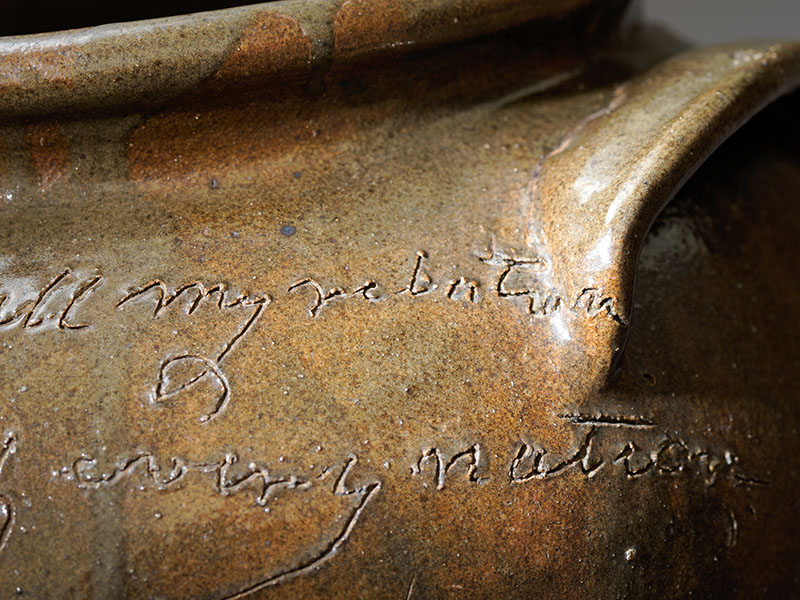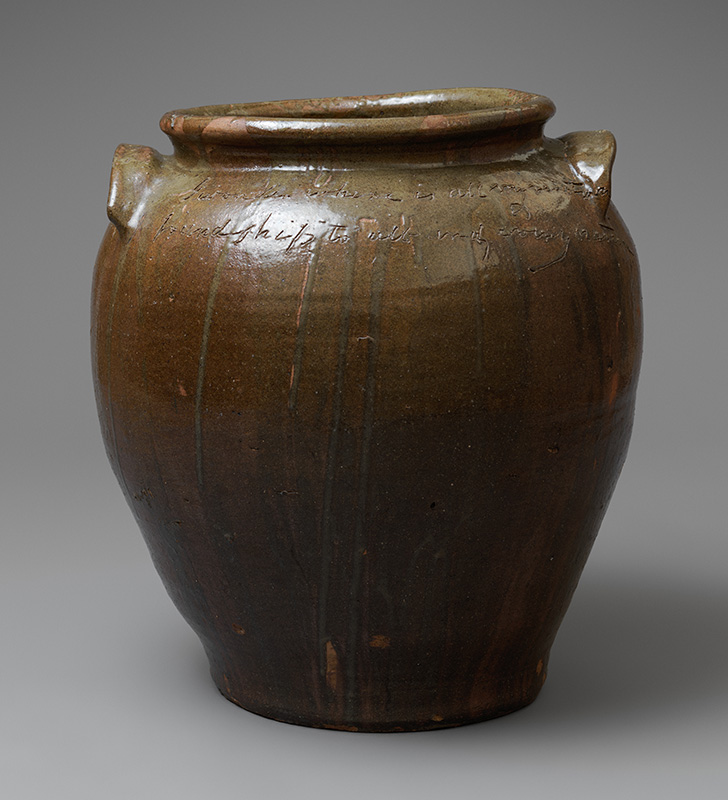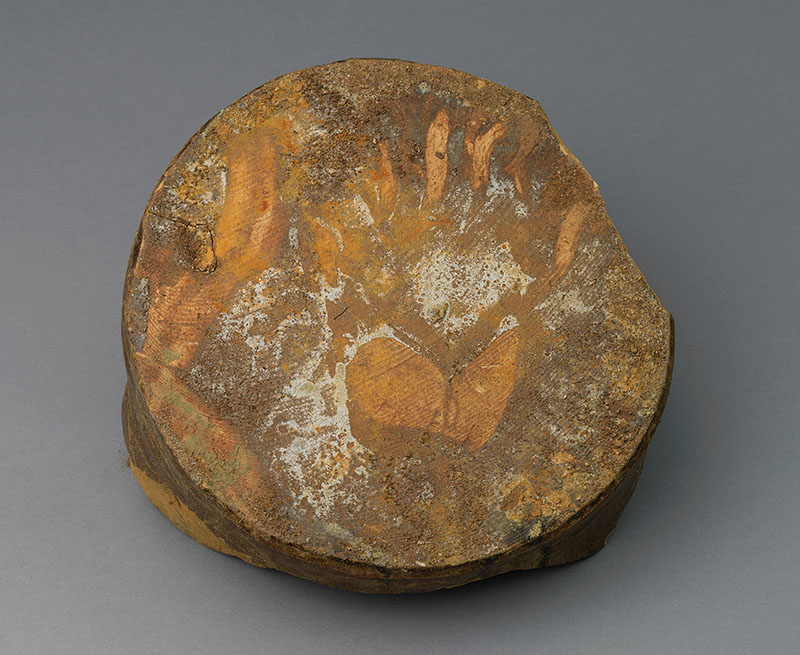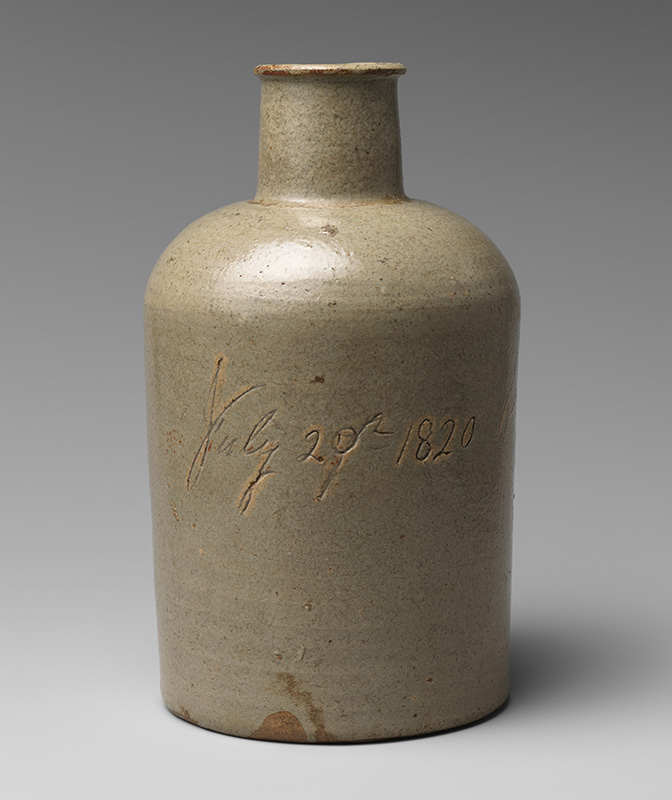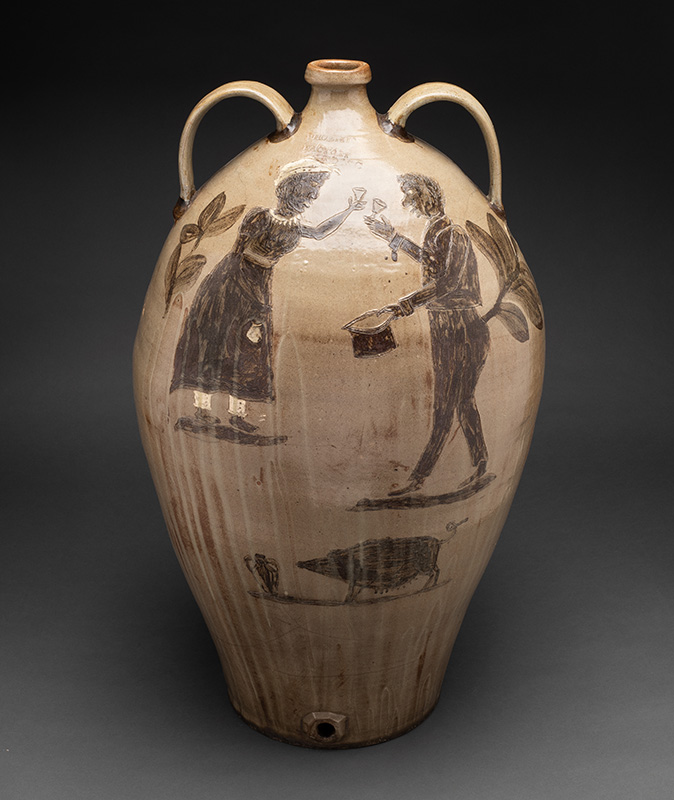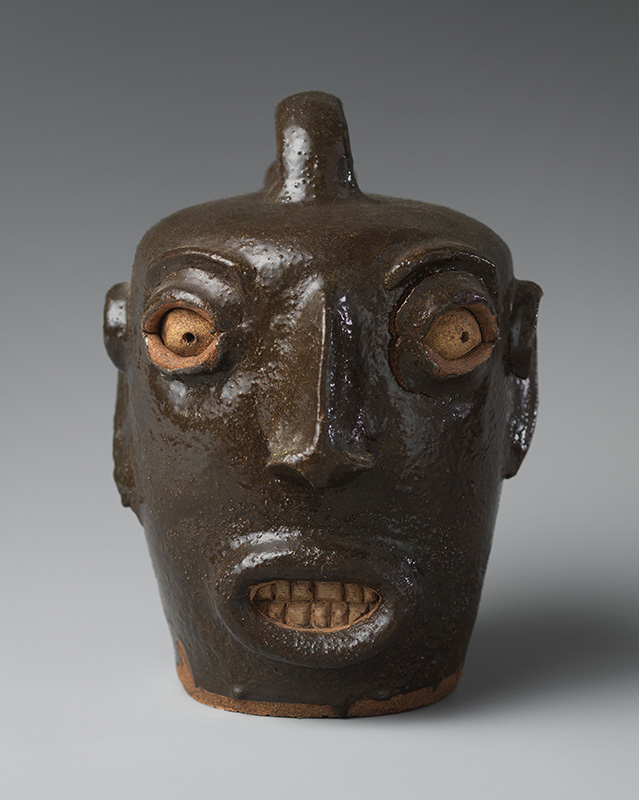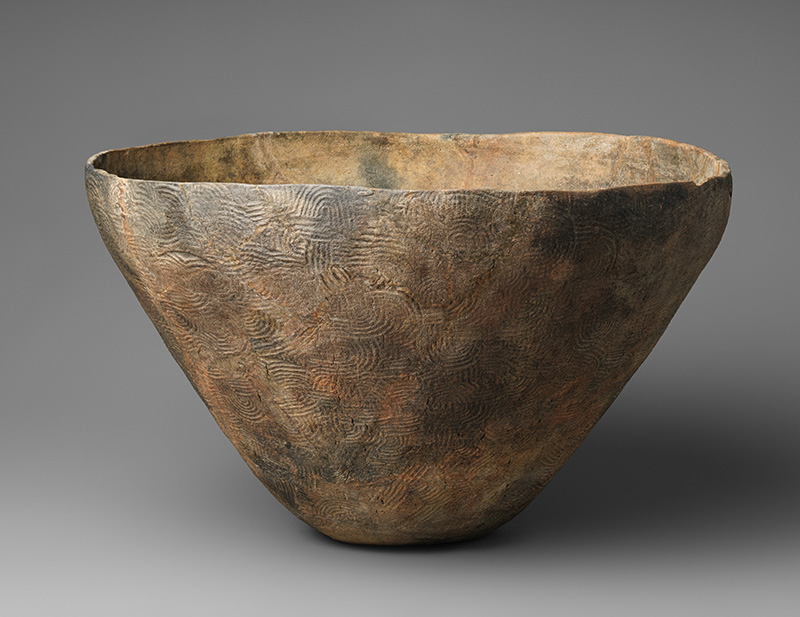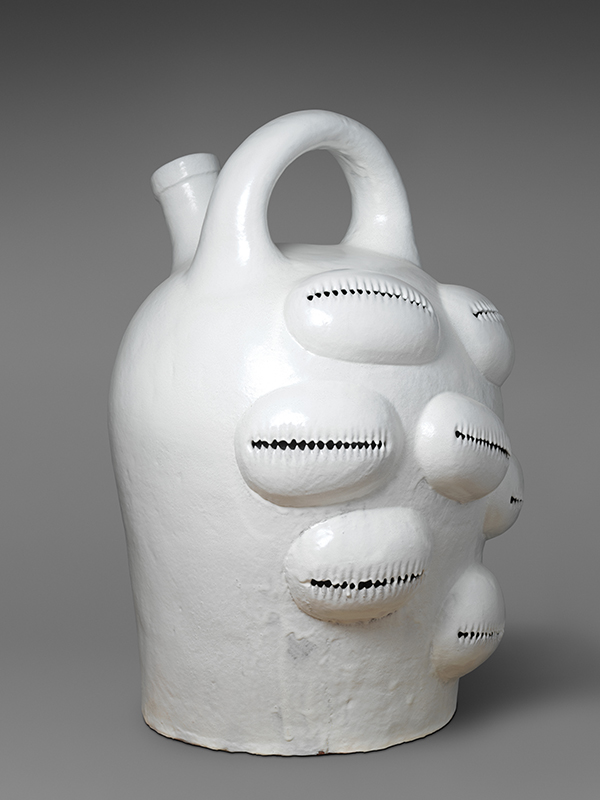Hear Me Now: The Met’s Landmark Exhibition of Ceramics from the Edgefield District
The Metropolitan Museum of Art’s landmark exhibition Hear Me Now: The Black Potters of Old Edgefield, South Carolina focuses on the work of African American potters in the 19th-century American South, in dialogue with contemporary artistic responses. Considered through the lens of current scholarship in the fields of history, literature, anthropology, material culture, diaspora, and African American studies, these vessels testify to the lived experiences, artistic agency, and material knowledge of the enslaved peoples of this area.
The exhibition is co-curated by Adrienne Spinozzi, Associate Curator of American Decorative Arts at The Metropolitan Museum of Art; Ethan Lasser, John Moors Cabot Chair of the Art of the Americas at the Museum of Fine Arts; and Jason Young, Associate Professor of History at the University of Michigan. A group of artists and scholars were engaged in the planning of the exhibition, including Kate Hughes, who worked with Adrienne during a two-year fellowship funded by the Decorative Arts Trust. When the exhibition closes at The Met on February 5, 2023, it travels to the Museum of Fine Arts, Boston (March 6–July 9, 2023), the University of Michigan Museum of Art, Ann Arbor (August 26, 2023–January 7, 2024), and the High Museum of Art, Atlanta (February 16–May 12, 2024). This article is excerpted from the accompanying catalogue of the same name, as well as exhibition content and press materials. The publication features essays on the production, use, collection, dispersal, and reception of stoneware from Edgefield, an interview with a contemporary artist, as well as new perspectives on agency, creativity, and resistance within the institution of slavery.
In the decades before the Civil War, a successful alkaline-glazed stoneware industry developed in Old Edgefield District, a clay-rich area in the westernmost part of South Carolina. From the beginning, enslaved African Americans were involved with all aspects of this labor-intensive industry. The stoneware they made—durable, impervious, utilitarian vessels of varying sizes and forms essential for food preparation and storage—supported the region’s expanding population and was inextricably linked to the demands of a plantation economy.
The beginnings of the alkaline-glazed stoneware industry in this country can be traced to the early 1800s, when Abner Landrum found deposits of kaolin (a mineral substance necessary for ceramic production) in western South Carolina. By the 1810s, the village of Pottersville had developed around Landrum’s pottery and kiln, making it one of the earliest of at least a dozen manufacturing sites in the area. The success of these potteries depended on the labor and expertise of enslaved African Americans who developed the specialized skills necessary for mining and processing clay; constructing sophisticated kilns; felling, hauling, and seasoning lumber for fuel; and managing multiday firings of kilns that spanned more than 100 feet in length. In an effort to reduce reliance on Northern and foreign imports, the burgeoning stoneware industry met the needs of the rapidly expanding plantation economy, supplying the region with functional wares.
Hear Me Now opens with a display of 12 extraordinary vessels by Edgefield’s best-known potter, Dave (figures 1, 2, and 3), who by the late 1860s appears in official documentation as David Drake. Dave likely made thousands of vessels, and beginning in the 1830s he signed, dated, and inscribed dozens of pots with short verses. Witty yet tragic, straightforward but endlessly elusive, his poems merit close attention. Written for his contemporaries, but also for the future, the verses reflect the joys, traumas, and lived experience of enslavement, echoing the prose of abolitionists such as Frederick Douglass and Harriet Jacobs.
At their core, Dave’s inscriptions were acts of defiance. He worked at a time when South Carolina law explicitly prohibited enslaved people from learning to read or write. Despite grave consequences—50 lashes were prescribed, but punishments were often more violent—Dave continued to write for more than three decades. All the while, he was honing his craft, using his delicate touch and prodigious strength to produce larger and larger pots, even after losing a leg under mysterious circumstances. Dave’s late jars are so big and heavy they are almost immobile, closer to monuments and gravestones than to the household vessels made at many of Edgefield’s potteries.
Enslaved potters were regularly “hired out” and sent from one pottery to another, leading to the development of an African American community of mobile potters. Their authorship is evident in a range of maker marks and symbols, handprints (figure 4), distinctive decoration, and, in rarer instances, inscribed dates and names. The contributions of other laborers may be less visible, but they were equally critical to the success of the potteries.
Abner Landrum’s Bottle (figure 5) bears a date and signature in cursive script, which is the only known work carrying Landrum’s name. It is the earliest example of an inscribed Edgefield vessel, foreshadowing those produced by Dave starting in the following decade. Landrum also published the short-lived Edgefield Hive (1829–30), a local serial newspaper, which featured a regular “Poetry” column. During this period, Dave was enslaved by Landrum, and only a few years later writing first appears on the wares made by Dave. Whether coincidence or causality, Dave was enslaved in a literary environment.
Like Landrum, many of the potteries operating during this time relied on enslaved labor to complete the wide range of tasks required to sustain the burgeoning stoneware industry. Although many objects bear his stamp and signature slip-trailed decoration, the white potter Thomas M. Chandler Jr. had at least four enslaved potters working with him at various times at different potteries, complicating the narrative that Chandler is responsible for the wares bearing his impressed mark. A large watercooler—one of only a handful known to compare in size to the wares of Dave—features finely executed incised and painted decoration in slip (figure 6). This is most likely the work of Chandler, whose early stonewares also included painted figurative embellishment. This impressive object remains a mystery. Its anomalous composition of a slave wedding rendered in painstaking detail begs many questions about
its purpose and reception when it was created in 1840.
Enslaved men and women also worked in numerous artisanal fields adjacent to the potteries. As carpenters, masons, and woodcutters, they hauled, hewed, and carried material to support Edgefield’s pottery industry; others built and fired kilns and distributed the wares across the region. Their collective artistry and technical knowledge are reflected in the network of African American potters who continued working in stoneware after emancipation.
Among the exhibition highlights is a selection of 18 regional face vessels—ceramic vessels embellished with hand-modeled facial features in high relief (figures 7 and 8). Also referred to as face jugs, their emergence coincides roughly with the 1858 arrival of a slave ship illegally transporting more than 400 captive Africans, some 50 years after the transatlantic slave trade had been outlawed in the United States. More than 100 of these individuals were sent to Edgefield, where many were put to work in the potteries. Growing evidence suggests that this late arrival of captive Africans served as a catalyst in the re-emergence of African-inspired art, religion, and culture in the region. Face vessels bear a close resemblance to minkisi, or ritual objects, that were important in West-Central African religious practices. Kaolin served as a sacred substance to facilitate communication between the living and the dead during rituals. Kaolin inserts are found in Edgefield face vessels, suggesting similar spiritual meanings.
The exhibition also steps back centuries prior to European and American incursions on what is now the southeastern United States when Indigenous peoples had developed tools and techniques to take advantage of the area’s rich clay deposits. On view in the main gallery is an example of an earthenware bowl dating to around 1500 by an unidentified Woodland artist (figure 9) alongside a modern vessel by Earl Robbins (1923–2010), a Catawba Indian Nation potter.
Speaking to Edgefield’s continued resonance, and offering connections to an otherwise fragmented past, are seven contemporary works by five Black artists working today, including Simone Leigh (figure 10), Adebunmi Gbadebo, Woody De Othello, Theaster Gates, and Robert Pruitt. The contemporary works in the show engage with issues of identity in various ways, and some are directly responding to the historical stoneware. For others, their practice resonates with Edgefield stoneware. In dialogue with the historic wares, these works serve as urgent reminder that artistry and creative expression can persist even under brutal conditions—a resounding message in our current moment of racial reckoning.
Through the stories of these objects, Hear Me Now sheds light on the many contributions and lived experiences of the hundreds of men, women, and children who labored within slavery’s system of oppression by presenting a fuller picture of the region’s stoneware production. As the first exhibition from The Met’s American Wing to highlight the work of enslaved makers, this project marks a pivotal moment in the Museum’s efforts to tell a more inclusive and expansive story of artistic expression, both past and present.
A print version of this article was published in The Magazine of the Decorative Arts Trust, one of our most popular member benefits. Join today!


